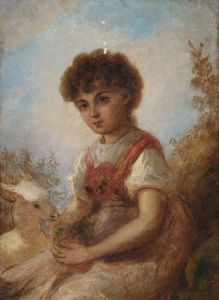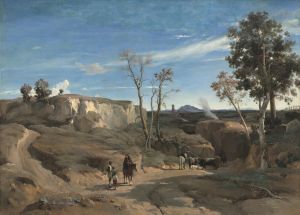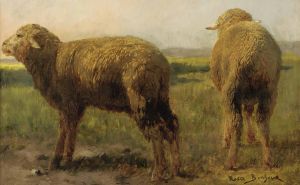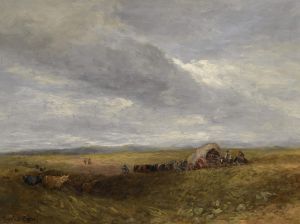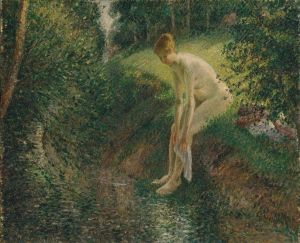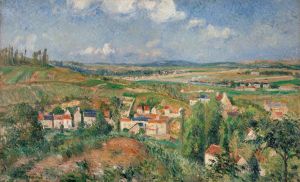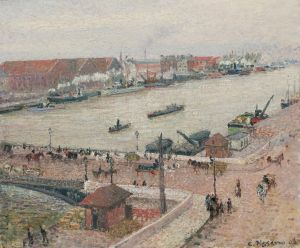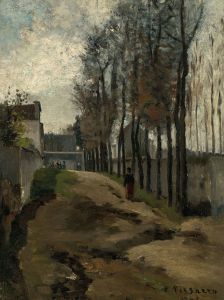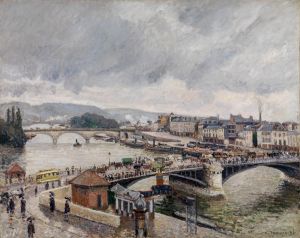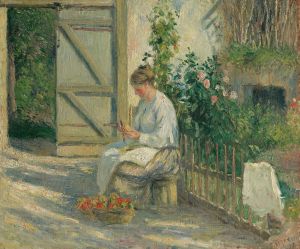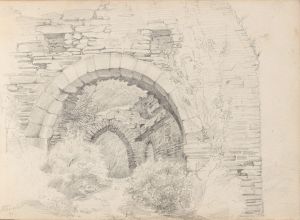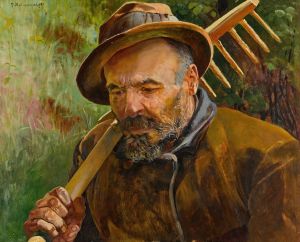
La Maison De Piette À Montfoucault
A hand-painted replica of Camille Pissarro’s masterpiece La Maison De Piette À Montfoucault, meticulously crafted by professional artists to capture the true essence of the original. Each piece is created with museum-quality canvas and rare mineral pigments, carefully painted by experienced artists with delicate brushstrokes and rich, layered colors to perfectly recreate the texture of the original artwork. Unlike machine-printed reproductions, this hand-painted version brings the painting to life, infused with the artist’s emotions and skill in every stroke. Whether for personal collection or home decoration, it instantly elevates the artistic atmosphere of any space.
Camille Pissarro, a pivotal figure in the Impressionist movement, painted "La Maison De Piette À Montfoucault" in 1874. This artwork is a testament to Pissarro's dedication to capturing the essence of rural life and the natural environment through his unique Impressionist lens. Pissarro, born in 1830 on the island of St. Thomas, was a Danish-French painter who played a crucial role in the development of Impressionism, both as an artist and a mentor to other Impressionists.
"La Maison De Piette À Montfoucault" depicts the home of Ludovic Piette, a close friend and fellow artist, located in Montfoucault, a small village in the Normandy region of France. Pissarro often visited Piette and was inspired by the serene and pastoral landscapes surrounding the area. This painting is one of several works Pissarro created during his stays at Montfoucault, reflecting his deep appreciation for the rural setting and the simplicity of country life.
The painting exemplifies Pissarro's Impressionist style, characterized by loose brushwork, a vibrant color palette, and an emphasis on capturing the effects of light. In "La Maison De Piette À Montfoucault," Pissarro employs these techniques to portray the tranquil atmosphere of the countryside. The composition features the Piette home nestled amidst lush greenery, with the play of light and shadow adding depth and dimension to the scene. Pissarro's use of color is particularly noteworthy, as he skillfully blends various shades of green, brown, and blue to convey the natural beauty of the landscape.
Pissarro's choice of subject matter and his approach to painting were influenced by his belief in the importance of depicting everyday life and the natural world. He was known for his egalitarian views and his commitment to portraying the lives of ordinary people, often choosing rural and working-class subjects over more traditional or aristocratic themes. This focus on the commonplace is evident in "La Maison De Piette À Montfoucault," where the simplicity of the rural setting is celebrated and elevated through Pissarro's artistic vision.
Throughout his career, Pissarro was a central figure in the Impressionist movement, participating in all eight of the Impressionist exhibitions held between 1874 and 1886. His work was instrumental in shaping the direction of the movement, and he was highly regarded by his peers, including Claude Monet, Edgar Degas, and Paul Cézanne. Pissarro's influence extended beyond his own paintings, as he was a mentor to many younger artists, encouraging them to explore new techniques and perspectives.
"La Maison De Piette À Montfoucault" is a significant example of Pissarro's work during the early years of Impressionism. It reflects his commitment to capturing the beauty of the natural world and his innovative approach to painting. Today, Pissarro's paintings are celebrated for their contribution to the Impressionist movement and their enduring appeal, with "La Maison De Piette À Montfoucault" standing as a testament to his artistic legacy.





